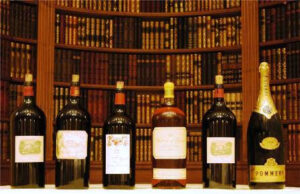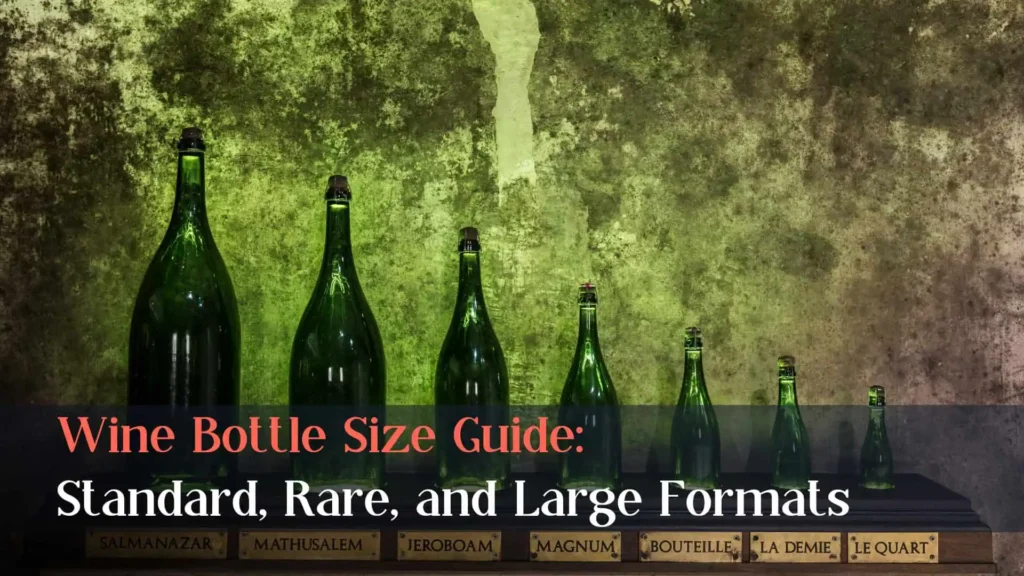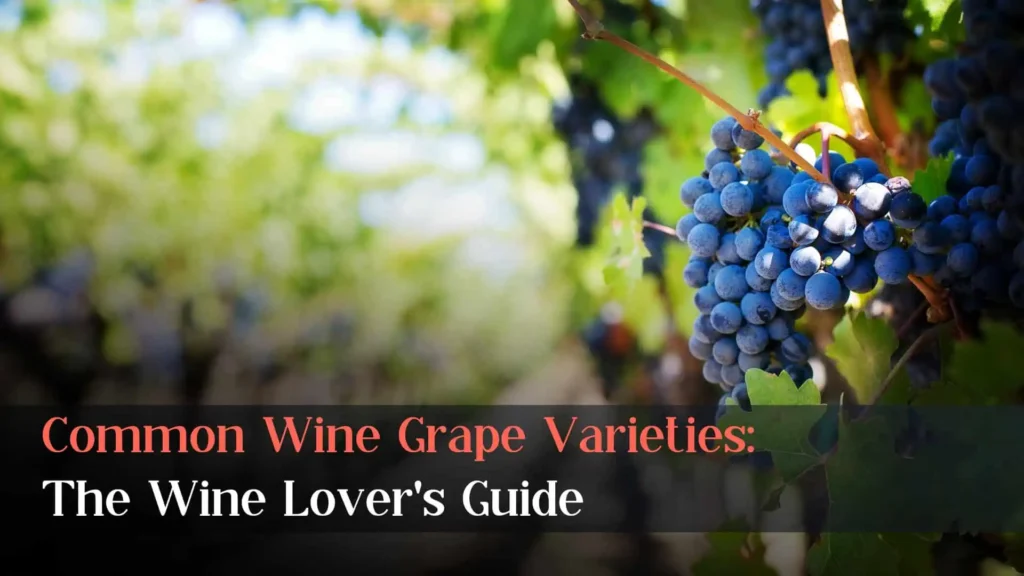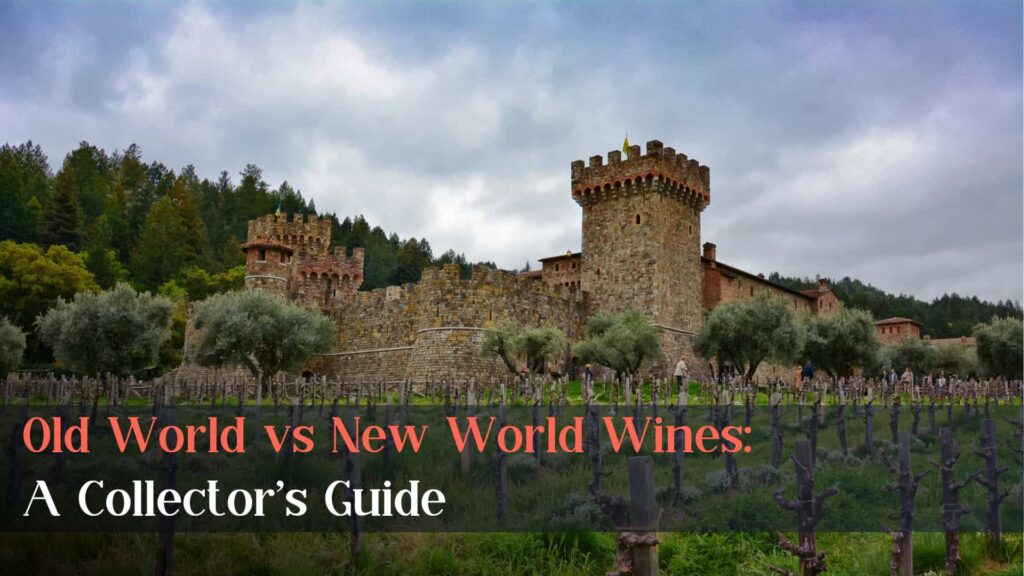The size of a wine bottle does more than just dictate how much wine you get; it can significantly impact your wine-drinking experience.
In this article we’ll examine a few of the more common wine bottle sizes, to showcase the wide variety available in the world of wine.
From the standard 750 ml bottle to the impressive Nebuchadnezzar, each bottle size has a unique name and story that we’ll cover below:
Table of Contents
ToggleCommon Wine Bottle Sizes
Standard Wine Bottle (750 ml)

The standard 750 ml wine bottle, originating in the Bordeaux region of France in the mid-19th century, has become a universal symbol in the wine industry. Its capacity is considered ideal for a dinner for four, providing just enough wine to complement a meal while allowing proper aging without risk of spoilage.
The adoption of this size was largely influenced by the wine trade between France and England. English merchants, the main buyers of French wine, used the imperial gallon as their primary unit of volume. This led to a practical standardization that aligned with both measurement systems. French wine was transported to England in 225-liter barrels, equivalent to 50 imperial gallons, which could be neatly divided into 300 bottles of 750 ml each.
This standardization simplified trade significantly. Each imperial gallon corresponded to six bottles, making conversions and negotiations more straightforward for both parties. Additionally, the 750 ml size allowed for convenient packaging in cases of six or twelve bottles, streamlining transport and sales processes.
Today, the 750 ml bottle remains the industry standard due to its perfect balance of quantity and convenience.
Half Bottle (375 ml)

Image Source [The Shout]
The 375 ml bottle, often referred to as a half bottle or demi bottle, is perfect for those who prefer a smaller serving. Ideal for solo enjoyment, intimate dinners, or trying new wines without committing to a full bottle, half bottles can be incredibly convenient. They are also commonly used for dessert wines and some fine wines, providing just the right amount for a single serving or a small gathering.
Half bottles are especially handy if you want to sample a wine before buying a full bottle or if you’re looking for a smaller, more manageable serving for one or two people.
Mini Bottle (187.5 ml)

Image Source [PotterWines]
The Mini bottle, holding 187.5 ml, is a compact option ideal for individual servings or tastings. Often seen on airplanes and in events, this size is perfect for offering a small, convenient serving of wine.
Many wineries don’t produce wines in this small format, making them relatively rare and sometimes more specialized.
Magnum Bottle (1.5 L)

Image Source [PunchDrink]
The Magnum bottle, holding 1.5 liters, equals two standard bottles and is often chosen for celebrations and large gatherings. Its impressive size not only makes a visual impact but also enhances the aging process. Wines in Magnum bottles can develop more complex flavors over time due to the slower aging process, which is beneficial for those looking to cellar their wines.
Large format bottles like the Magnum are believed to age better than standard bottles, often resulting in a richer, more nuanced wine. This is due to the lower ratio of wine to air, which slows oxidation and improves aging.
Double Magnum Bottle (3 L)

Image Source [Wine Country Table]
The Double Magnum, or Jeroboam for sparkling wines, holds 3 liters, equivalent to four standard bottles. This size is often associated with grand events and is favored for its impressive presence.
The Double Magnum provides ample wine for large gatherings while offering the same aging benefits as other large formats. It’s a popular choice for both celebrations and collectors seeking a statement piece.
Methuselah Bottle (6 L)

Image Source [WUFT]
The Methuselah bottle, containing 6 liters, is equivalent to eight standard bottles and is used for both its grandeur and its aging potential.
This size is ideal for major celebrations and has a long-standing tradition in the wine world. Methuselah bottles are highly prized by collectors and are often used for high-end wines that benefit from extended aging.
Rare Large Format Wine Bottle Sizes
Salmanazar Bottle (9 L)

Image Source [FoxNews]
The Salmanazar bottle is named after an Assyrian king, adding a regal touch to its already impressive stature. This 9L bottle is ideal for large-scale events where both quantity and presentation are key.
Nebuchadnezzar Bottle (15 L)

Image Source [FoxNews]
Holding a whopping 15 liters, The Nebuchadnezzar is one of the largest commonly recognized wine bottle sizes. Due to its massive volume, with bottles typically weighing over 36 KG (80 lbs), the Nebuchadnezzar is less practical for everyday use.
Collectors prize Nebuchadnezzars for their rarity and the exceptional aging potential they offer, making them a coveted addition to any serious wine collection.
Melchior Bottle (18 L)

Image Source [Vinrac]
The Melchior bottle, containing 18 liters, is one of the largest wine bottles available, equivalent to twenty-four standard bottles. This size is extremely rare and typically reserved for the most extravagant events.
The Melchir and other rarer large-format bottle sizes are highly collectible and often associated with grand occasions or events.
Wondering how to serve giant bottles like the Melchior and Nebuchadnezzar? You’ll likely need a cradle like the one shown below:
The Impact Of Bottle Size on Aging & Collectibility
The Impact of Bottle Size on Aging
The size of a wine bottle significantly impacts how wine ages. Generally, larger bottles are known for their ability to age wine more slowly and gracefully compared to standard-sized bottles. This is due to the larger volume of wine relative to the amount of air in the bottle, which reduces the rate of oxidation.

Image Source [WineBerserkers]
In larger formats like Magnums, Double Magnums, and beyond, the wine’s exposure to air is minimal compared to its volume, allowing for a slower maturation process. This extended aging can lead to more complex and integrated flavors. For instance, a wine in a Magnum bottle might develop a richer texture and more nuanced flavors over time compared to the same wine in a standard bottle.
If you’re looking to cellar a wine for an extended period, consider opting for a larger format bottle. The slower aging process can enhance the wine’s depth and complexity, making it a valuable choice for long-term storage. For tips on how to store your wine check out our article below:
Related Post: Wine Storage 101 Key Factors for Preservation
Are Different Bottle Sizes More Collectible?

Image Source [IdealWineInfo]
- Rarity and Demand: Many wineries produce only a limited number of large format bottles, adding to their rarity. Rare bottle sizes like the Nebuchadnezzar or Melchior can become valuable collector’s items. Special editions, limited releases, or bottles from renowned vintages further increase their desirability.
- Historical Significance: Some large format bottles have historical significance or are associated with prestigious events, enhancing their collectible appeal. Bottles with notable provenance or those that have been part of significant auctions often can command higher prices.
The market value of large-format bottles can vary significantly based on several factors. Size, rarity, provenance, and the reputation of the winery all contribute to the price. Generally, larger bottles are more expensive due to their rarity and the costs associated with producing and storing them.
Related Post: How to Start a Wine Collection Beyond the Basics
Wrap Up
Ultimately each wine bottle size affects aging, flavor development, and presentation in unique ways.
Whether you’re interested in the convenience of smaller bottles, the aging benefits of large formats, or the collectible value of rare sizes, knowing these details can you choose the right bottle for any occasion.
If you’re looking to diversify your collection with some less common bottle sizes, check out the GrtWines’ marketplace for rare and collectible wines of all sizes!



